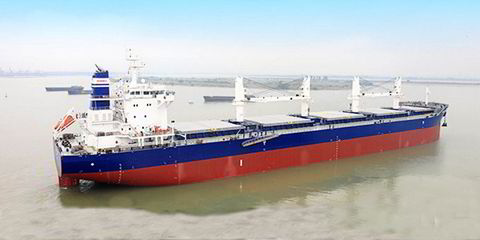Liner operators are responding to high load factors for container services from Asia to South America by upgrading and restructuring services.
An uptick in demand has led Pacific International Lines (PIL) to launch a new service on the trade between Asia and the East Coast of South America (ECSA) operating smaller ships in the 2,500-teu to 4,200-teu range.
At the same time, the Singapore-based company this week unveiled plans to launch a new service between Asia and the West Coast of South America (WCSA) with partners operating ships of between 4,200 teu and 6,500 teu.
The fortnightly Sino South America (SSA) service to the ECSA targets only a handful of ports, but at a 10-week rotation is quicker than rival services, says analyst ClipperMaritime.
In its first edition of its Horizons monthly, the data provider adds that the vessels are smaller than the average size for the trade, which has risen from 8,400 teu to 9,400 teu over 12 months.
But the analyst points to the possibility that PIL will upgrade to a weekly service by using available 6,600-teu units from its Asia-Red Sea Loops.
While the use of larger ships to the ECSA could place pressure on spot rates, the sailing distances and the expected rise in bunker prices suggest a preference for bigger vessels, ClipperMaritime says.
PIL’s new SSA service is deemed a response to a strong demand potential after three years of volume declines.
Lines have operated only three services on the Asia to ECSA trade after a restructuring of the service in early 2016, which saw two weekly services removed from the trade and some operators ceasing to be vessel deployers.
But the signs are that the trade is picking up, with double-digit growth of 10% forecast for 2018, although volumes will still be beneath the peak reached in 2013 of 1.6 million teu, according to ClipperMaritime.
That may be having some impact on freight rates between China and Brazil, which rose $80 over the week to $2,391 per teu, according to the Shanghai Containerised Freight Index.
PIL, which ceased to operate its own ships on the Asia-ECSA trade service in October 2015, launched the new SSA service in late January using the 3,556-teu Kota Megah (built 2013) and 2,601-teu Kota Gunawan (built 2003), according to Alphaliner data. In the interim, it had operated through slots jointly run by CMA CGM, Hapag-Lloyd, Cosco, NYK and Evergreen.
The restructuring on the trade between Asia and the ECSA is expected to continue as a result of Maersk Line’s acquisition of Hamburg Sud.
The two operators account for around 18% of deployed capacity on the trade, according to ClipperMaritime estimates.
Separately, weekly capacity on the Asia to West Coast of South America is expected to hit 92,000 teu by June, an increase of 29% compared with the same period last year, according to Alphaliner.
That is partly a result of a new service unveiled on Monday between Asia to WCSA that PIL plans to launch in April.
The analyst says the additional service — one of four to be offered by PIL on the Asia to WCSA trade — is expected to operate using ships of between 4,200 teu and 6,500 teu together with partners Wan Hai Lines, Cosco, and Evergreen.




